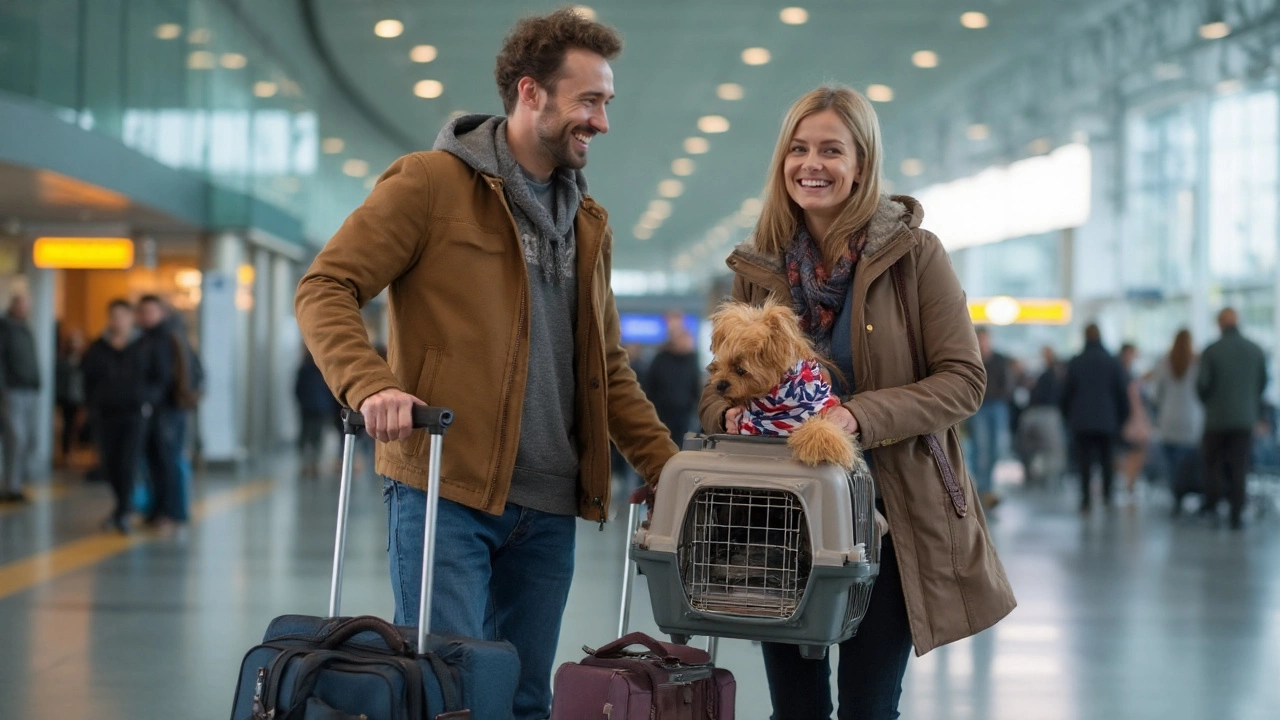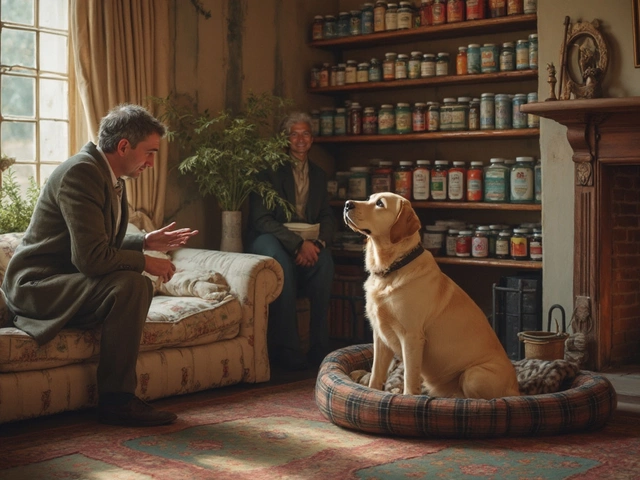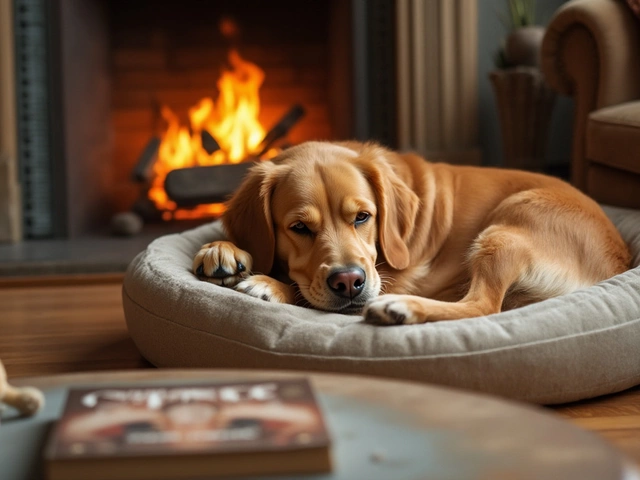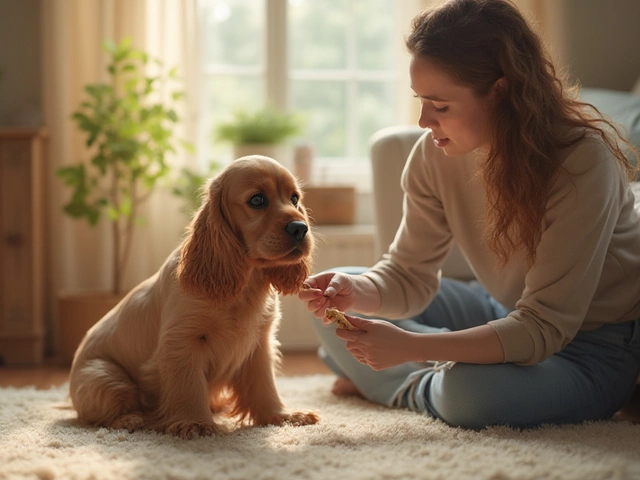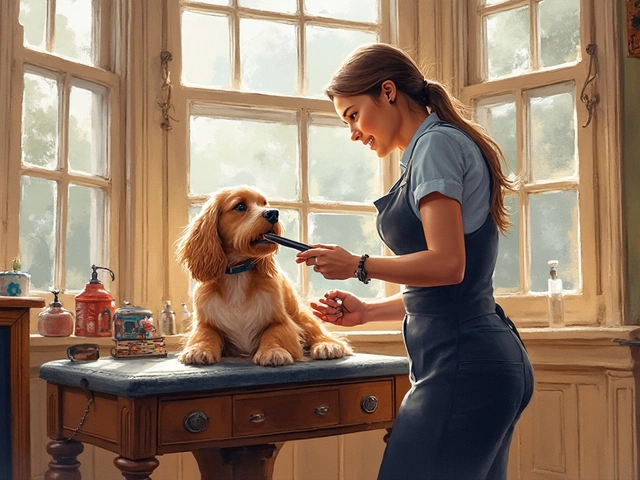You’re at the airport, your pet’s making those big, hopeful eyes, and you’re suddenly not sure if your carrier cuts it for TSA. That wave of panic? You’re not alone—it happens to loving pet parents every single day. The thing is, TSA isn’t looking for a one-size-fits-all solution, but choosing the wrong pet carrier can derail your dream trip fast. Missed flights, extra fees, and frantic searches for an overpriced spare at the airport? Total nightmare. Let’s slice through the confusion and look at what really makes a carrier TSA approved so you (and your pet) can soar through security like pros.
What Does "TSA Approved" Really Mean for Pet Carriers?
When people say "TSA approved pet carrier," they’re not talking about some official badge or gold sticker straight from the Transportation Security Administration. In reality, the TSA doesn’t have a strict menu of approved pet carriers. Instead, it sets screening guidelines to keep flights safe, and airlines set the carrier rules you actually have to follow. If you’re picturing a dusty rulebook in a government office, think again. It’s way more about what works in practice. TSA wants your pet safe, contained, and easy to screen at checkpoints. Airlines care about carrier size, ventilation, escape-proof closures, and leak resistance since your furry friend spends hours beneath a seat.
The closest the TSA gets to a rule is this: your carrier must fit through the X-ray machine. Your pet doesn’t go through—just the carrier gets scanned. You’ll carry your buddy through the metal detector (leash and harness on, obviously), and agents check both your pet and the empty carrier. If your carrier is spilling treats or the zippers jam? That’ll slow you down. So, a "TSA approved carrier" really means a carrier that plays nice with both security and airline standards. You can have the fanciest pink rhinestone crate, but if it’s a half-inch too big or the mesh is flimsy, the airline staff can boot you from the flight. Never fun.
Quick fact: The most common in-cabin pet carrier dimensions fall around 18” long x 11” wide x 11” high, but this isn’t set in stone. Each airline has their own slightly different size limit (trust me—Delta, Southwest, United, JetBlue, and American all vary a bit). Bottom line? The carrier has to fit under the seat in front of you, no matter what brand you’ve bought.
According to a 2023 survey by the International Pet and Animal Transportation Association (IPATA), over 70% of people who get stopped at airport security with pets are using carriers that don’t follow their specific airline’s rules. That’s a ticket to a travel headache. Just because a carrier says “airline approved” on Amazon doesn’t mean it will actually fly with every airline.
| Airline | Maximum Carrier Size (inches) | Notes |
|---|---|---|
| United | 18” x 11” x 11” | Soft-sided carriers slightly flexible |
| Delta | 18” x 11” x 11” | Be sure the carrier fits under the seat |
| Southwest | 18.5” x 8.5” x 13.5” | Both hard- and soft-sided accepted |
| American | 18” x 11” x 11” | Must fit under seat |
| JetBlue | 17” x 12.5” x 8.5” | Strict about sizes |
Key Features of a TSA Approved Pet Carrier
Shopping for a pet carrier isn’t rocket science, but some details matter way more than others. Let’s break down what makes a carrier likely to coast through both TSA and airline gatekeepers:
- Size counts. No going above the airline’s underseat limit. Even an inch too tall could mean your pet rides cargo or gets left behind.
- Structure matters. Soft-sided carriers tend to get the green light for in-cabin flights because you can gently squish them to fit under the seat. Rigid, hard-sided carriers? They only work if they fit perfectly, so double-check the numbers.
- Ventilation is non-negotiable. At least two to three mesh panels are a must. If your pet can’t breathe comfortably or gets too hot, you’ll have trouble at the check-in desk.
- Sturdy zippers and closures. Airport agents have a horror story for every Houdini pet. Loose zippers or flimsy Velcro are a no-go. A carrier should close tightly and lock in place if possible.
- Leak-proof bottom. Accidents happen—bladder anxiety is real for pets at 30,000 feet. Choose a carrier with a waterproof base or tray and toss in an absorbent pad for backup.
- Comfort features. A cozy, padded liner calms nervous animals. If the carrier’s floor is hard or full of seams, your pet will squirm for hours. Look for removable, washable liners.
- Weight limit. Most airlines set a strict weight limit for in-cabin pets, often between 15 and 20 pounds, including the carrier. Test weigh before you head out.
- Handles and straps. Airport sprints happen. You want sturdy, padded handles or a shoulder strap. Bonus points for a carrier that slides over your suitcase handle.
- Easy access for security checks. Top-loading carriers make it so much easier to get your pet in and out during busy screenings, especially for cats or anxious dogs.
Want a specific example? The Sherpa Original Deluxe is often called out by flight attendants and pet travel experts as a safe bet. It comes in several sizes, has solid mesh panels, sturdy zippers, and slips nicely under most airline seats. But again—always double-check with your carrier. Some airlines (like JetBlue) are strict on every inch, so measure before you buy.
Here’s a wild stat: Amazon’s “airline approved pet carrier” product filter includes nearly 3,000 different models in August 2025. Not all of them fit airline or TSA rules, so always look up the exact measurements for your trip before you roll the dice.
Don’t forget handles, straps, and little extras like pockets for leashes, treats, and vaccination papers. You’ll want everything handy when an agent gives you That Look.
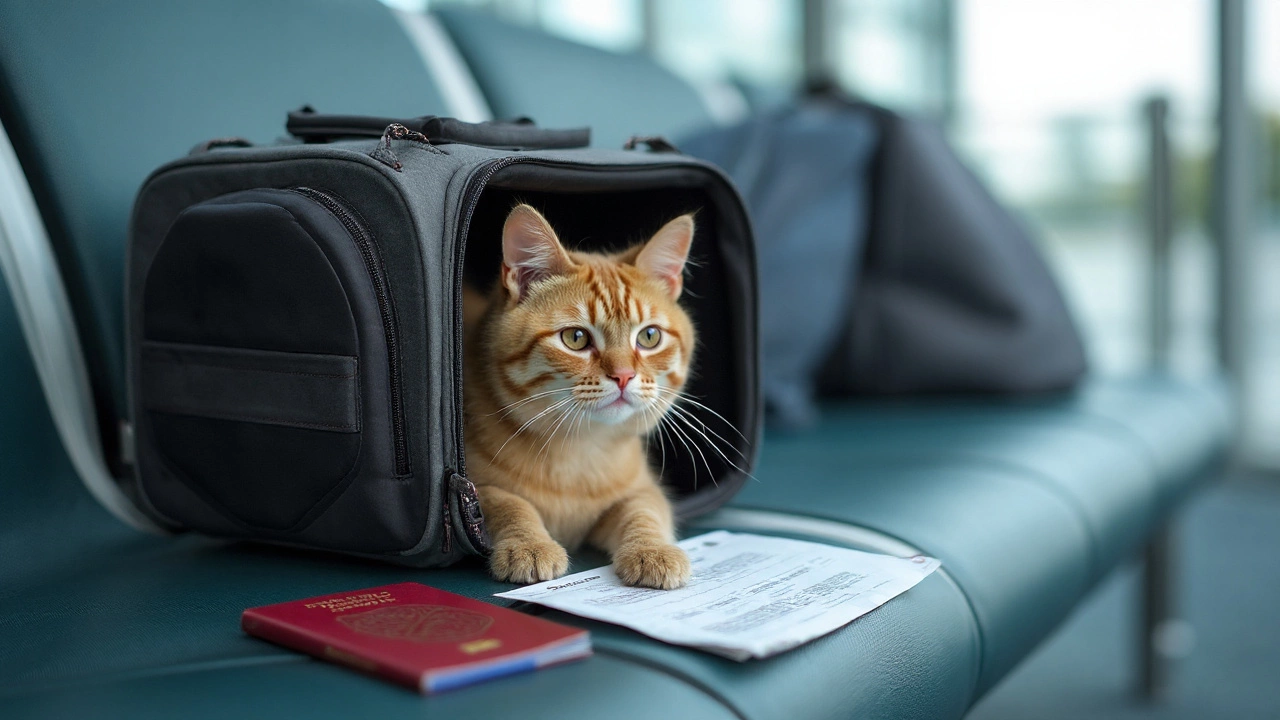
How to Prepare Your Pet (and Yourself) For TSA Screening
No one wants a scene at the checkpoint, and airport security for pets can be way less scary if you know what to expect. It doesn’t matter if your dog is chill or your cat turns into a liquid escape artist—they all need a bit of practice before the big travel day.
Start with trial runs. Get your pet used to chilling in the carrier. Begin by keeping them inside with treats and praise for a few minutes at a time, then slowly ramp up as they get more relaxed. Try zipping and unzipping near them, so they don’t flinch at the sound during the real thing.
When you hit the airport, here’s the process:
- Arrive early (two hours before domestic, three for international—airports get weirdly busy with pets).
- Go to the security line with your pet inside the carrier and all your travel docs ready.
- Tell the TSA agent you have a pet—they’ll guide you. You’ll take your pet out, go through the metal detector with them on a leash or in your arms, while their carrier gets X-rayed.
- Plan for a mini-wrestling match if your pet’s jumpy. Ask for a private screening room if you think they’ll bolt. TSA officers actually get training on handling animals, but you know your pet best.
- Once through, put your pet back in the carrier fast and zip it fully before releasing your grip—airport floors aren’t the place for a game of fetch.
A surprising number of pets (around 15,000 dogs and cats per year) temporarily slip away from their owners in U.S. airports, based on lost pet databases. Travel anxiety spikes, so take extra care.
Practical tip: Use a harness with ID and microchip your pet before you fly. Some owners add a bright bandana or LED collar so their pet stands out in case of confusion—especially during busy holiday or summer travel days.
Bonus Tips for Stress-Free Pet Travel on Planes
No amount of fancy carrier features beats a little advance planning. Here’s how to make your next trip a win for everyone (including the folks sitting near you):
- Double-check with your airline about specific carrier measurements and pet rules when you book. They update these rules all the time, and what worked last year might not today.
- Book your pet’s spot on the plane right away—most airlines limit in-cabin pets per flight.
- Use your pet’s favorite blanket or toy in the carrier. The familiar scent works better than any calming spray you can buy.
- Skip full meals a few hours pre-flight, but do offer water regularly. Nausea and accidents are less likely on a fairly empty stomach.
- Give your pet time to use the bathroom just before you enter security, and line the carrier with an extra puppy pad (just in case—it happens to the best of us).
- If your carrier has pockets, stash copies of your pet’s vaccine record, your vet’s contact, and airline approval list there—agents sometimes ask for proof, even on domestic flights.
- If your pet gets nervous or you’re traveling internationally, talk to your vet about mild calming medication, but always test it at home first. Some airports (like LAX and JFK) have pet relief areas post-security, but not all do.
And remember—not every pet is built for air travel. If your animal panics outside your house or hates the carrier after days of trying, it might be worth considering a pet sitter or reputable boarding option instead of subjecting everyone to a traumatic flight.
Traveling with pets shouldn’t feel like you’re dodging a pop quiz from airport officials. The right TSA approved pet carrier, paired with a little pre-flight prep, means you and your furry buddy can focus on the good stuff—safe, happy adventures together wherever you’re heading.
